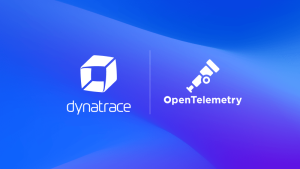Many organizations consider OpenShift vs. Kubernetes for managing containerized apps at scale. What are the differences between OpenShift and Kubernetes?
If you’re evaluating container orchestration software to manage containerized applications at scale, you may be wondering about the differences between OpenShift and Kubernetes. But as you contemplate OpenShift vs. Kubernetes, it’s important to understand what these container orchestration solutions are, how they relate, and their benefits and drawbacks.
A guide to container orchestration software
Container orchestration software automates the administration of containerized workloads and services, greatly reducing the time IT staff spend keeping an application environment running smoothly. Container orchestration allows an organization to digitally transform at a rapid clip without getting bogged down by slow, siloed development, difficult scaling, and high costs associated with optimizing application infrastructure.
As with Kubernetes vs. Docker, OpenShift vs. Kubernetes is a common debate, as they are two of the most widely used container orchestration tools. Although they share many features in common, there are also critical differences between OpenShift and Kubernetes. To put those differences into perspective, let’s look at what Kubernetes and OpenShift are and how they work.
What is Kubernetes?
Kubernetes is an open source container orchestration platform that enables organizations to automatically scale, manage, and deploy containerized applications in distributed environments. According to the Kubernetes in the Wild 2023 report, “Kubernetes is emerging as the operating system of the cloud.” In recent years, cloud service providers such as Amazon Web Services, Microsoft Azure, IBM, and Google began offering Kubernetes as part of their managed services. As a result of these services, organizations can further streamline the administrative overhead associated with application development.
Kubernetes containers are portable across environments, which enables developers to run them on nearly any type of infrastructure, whether in the cloud or locally. This flexibility helps organizations avoid vendor lock-in. Kubernetes also gives developers freedom of choice when selecting operating systems, container runtimes, storage engines, and other key elements for their Kubernetes environments. They can integrate their own applications in the Kubernetes API or use Kubernetes’ own tooling to roll out new features. One major Kubernetes advantage is its self-healing, continually making repairs and addressing failures that affect applications’ integrity.

That said, Kubernetes has some drawbacks. Its inherent complexity makes observability difficult — especially when used across highly distributed systems. IT teams can’t see into the internal state of Kubernetes containers, so they often collect a wide variety of telemetry data — such as logs, metrics, and distributed traces — to compensate for this lack of visibility.
While these data sources are helpful, they often can’t help IT understand the relationships and context necessary to quickly identify the root causes of application performance issues. As a result, organizations can have trouble transforming at scale, improving critical service-level agreements, and optimizing the user experience.
What is OpenShift?
Like Kubernetes, OpenShift is an open source Kubernetes-based container platform. OpenShift is developed by Red Hat and can run in a variety of environments — both cloud and on premises. In fact, it is a frequent choice for running Kubernetes on premises.
Because it’s based on Kubernetes, OpenShift provides containerization and orchestration of containerized workloads. Like Kubernetes, it allocates resources efficiently and ensures high availability and fault tolerance.
But OpenShift builds from there to provide integrated development tools, CI/CD (continuous integration/continuous deployment) pipelines, and built-in support for popular programming languages, frameworks, and databases. These tools enable OpenShift to support the entire application lifecycle, from development to production, including scaling, rolling updates, and version control. Without having to worry about underlying infrastructure concerns, such as storage, security, and lifecycle management, developers can focus on writing code.
Likewise, Red Hat OpenShift helps organizations administer Kubernetes more efficiently. For example, OpenShift simplifies Kubernetes management tools, giving developers everything they need to manage Kubernetes nodes, as well as the underlying control plane.
In addition, OpenShift provides numerous cloud services and self-managed deployment models to suit various applications and architectures, including the following:
- OpenShift Container Platform (OCP). This self-managed offering can run on premises or in the cloud.
- OpenShift Dedicated (OSD). The managed service runs on public clouds such as Amazon Web Services and Google Cloud.
- Red Hat OpenShift Online (OSO). This fully managed service runs on Red Hat’s public cloud.
Despite its advantages, however, OpenShift also has its limitations. While Kubernetes supports all cloud and Linux distributions, making it widely accessible to organizations using various platforms, OpenShift supports only Red Hat distributions, such as Red Hat Enterprise Linux (RHEL), CentOS, and Fedora. As a commercial solution, OpenShift is also comparatively less flexible than open source Kubernetes, making it less customizable to an organization’s unique requirements.
OpenShift vs. Kubernetes: Weighing the key differences
While Kubernetes and OpenShift are both popular container orchestration platforms, they are used in slightly different ways and offer different features. Some of the key differences include the following:
- Origin. Originally created by Google, Kubernetes is an open source project managed by the Cloud Native Computing Foundation (CNCF). OpenShift, on the other hand, is an open source Red Hat offering that is built on top of Kubernetes primarily on RHEL operating systems.
- Ease of use. While Kubernetes offers increased flexibility and powerful features, it can be complex to set up and manage. In contrast, OpenShift provides a simplified, user-friendly interface, with built-in support for CI/CD pipelines.
- Security. OpenShift has several built-in security features, while Kubernetes relies on the underlying infrastructure and additional tools for security. Additionally, OpenShift runs containers as a non-root user by default and provides additional security policies out of the box.
- Networking. Kubernetes provides a basic networking model. However, it needs additional tools or plugins for more advanced networking features. OpenShift, on the other hand, includes a more advanced software-defined networking (SDN) solution, which supports network policies for finer control over container communication.
- Updates and support. Kubernetes has frequent updates, which can sometimes lead to issues such as breaking changes. Red Hat OpenShift offers long-term support versions and commercial support.
- Integration and extensions. Kubernetes is more of a bare-bones platform. Therefore, it relies on external tools and services for most integrations and extensions. Conversely, as a Red Hat offering, OpenShift provides built-in integration with other Red Hat products and offers a marketplace for third-party extensions.
- Pricing. Unlike Kubernetes, which is a completely free and open source service, OpenShift has a pricing model for its enterprise version that includes additional features, support, and services.
A lesson in terminology: Kubernetes namespace vs. OpenShift project
It’s OpenShift vs. Kubernetes when it comes to terminology, too. In addition to the aforementioned feature differences, Kubernetes and OpenShift use different terminology, which can be confusing for organizations and practitioners alike.
For example, a namespace in Kubernetes is typically referred to as a project in OpenShift. Despite their similarities, there are a few differences between namespaces and projects, including the following:
- Access control. In Kubernetes, users manage access control independently from namespaces. In contrast, OpenShift’s projects have a predefined set of permissions for project-level operations. This makes it easier for organizations to control who has access to what within a project.
- Isolation. While teams use both namespaces and projects to isolate resources within a cluster, OpenShift’s projects provide additional features. These include the ability to limit the amount of resources that all containers can consume within a project.
- User-friendly. Unlike Kubernetes namespaces, OpenShift projects are more user-friendly. When a user creates a project, for instance, they automatically become the project admin. With Kubernetes namespaces, this does not happen automatically.
Which container orchestration software is right for you?
If your organization needs a container orchestration solution with enterprise-level support and security, OpenShift is the clear choice. OpenShift offers a secure-by-default option to increase security, and its security policies are much stricter than Kubernetes. OpenShift is also a good choice if CI/CD is a priority for your organization.
Additionally, OpenShift is designed to meet the needs of industries with strong compliance and regulatory requirements, such as healthcare or finance. It addresses regulations such as the European Union’s General Data Protection Regulation and the U.S. Health Insurance Portability and Accountability Act.
On the other hand, Kubernetes is a strong option if you need more customization and flexibility, and you have in-house Kubernetes experts who can troubleshoot problems as they arise.
Kubernetes also works on the widest possible range of operating systems and platforms. If you’re a social media or gaming company that places an especially high priority on releasing updates at a rapid pace, Kubernetes may be a better fit.
Automatic and intelligent observability for OpenShift and Kubernetes
Whether you choose OpenShift vs. Kubernetes or vice versa, Dynatrace can make the most of your container orchestration solution. Dynatrace uses AIOps and cloud observability to combine metrics, logs, and traces with topology information, real user experience data, and meta information. With advanced observability of every Kubernetes cluster, pod, and node — and all connections and dependencies they touch — you can quickly pinpoint and solve performance problems as they arise.
Additionally, Dynatrace offers powerful monitoring capabilities for OpenShift, helping you manage costs, automate your operations, and release better software faster.
Whether using OpenShift or Kubernetes, the Dynatrace observability and security platform is the only Kubernetes monitoring system with continuous automation that identifies and prioritizes alerts from applications and infrastructure without changing code, container images, or deployments.





Looking for answers?
Start a new discussion or ask for help in our Q&A forum.
Go to forum